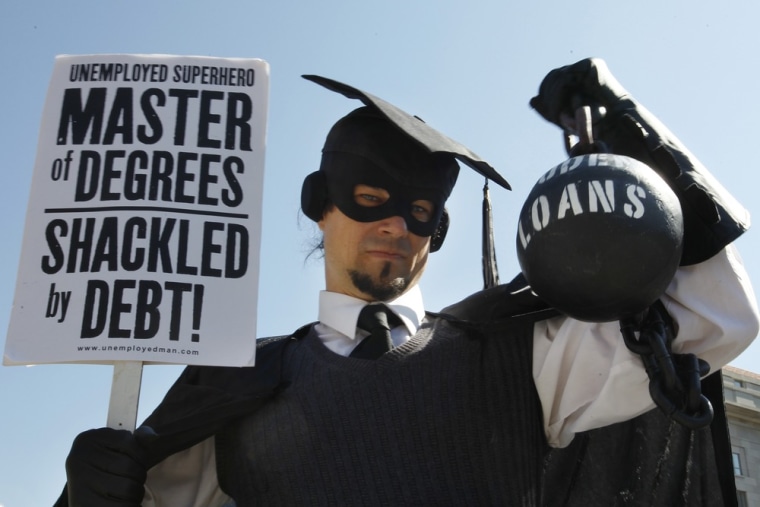As college students start the fall semester, millions of graduates (and drop-outs) struggle to pay off a mountain of student loan debt – more than $1 trillion dollars, according to the Student Loan Debt Clock. That’s more than all the credit card debt Americans owe.
College seniors who graduated with student loans in 2010 owed an average of $25,250, according to the latest data from The Project on Student Debt. That’s up five percent from 2009.
And these days, a college degree doesn’t guarantee employment, let alone a good-paying job.
“You don’t realize the seriousness of paying back that loan until you finish school,” said Langdon Bueschel of Seattle, who needed financial aid to attend the University of Washington.
When he graduated in 2008, Bueschel had a degree in English and $12,000 in student loan debt. He has a job designing online advertising, but most of his money goes to living expenses. Because he missed so many payments, his balance now stands at $18,000 and counting.
“I could have been more responsible and paid more quickly,” he admitted, “but sometimes things come up.”
The most recent report from the U.S. Department of Education found that more than 320,000 borrowers had defaulted on their student loans as of September 2010. That is, they were 360 days or more late in making their payments.
Can’t handle your student loan payments?
You may have options and there’s an easy way to find them. The Student Debt Repayment Assistant on the Consumer Financial Protection Bureau (CFPB) website can help students – and their families – figure out the best repayment options and what to do if they’re behind in their payments.
“You just answer a few questions and we’ll be able to point you to the best repayment program or action you should take in order to best manage your debt,” said CFPB student loan ombudsman Rohit Chopra.
First, you need to know what type of loans you have – government, private or both – because the remedies are different. Not sure? The Student Debt Repayment Assistant has a link to the National Student Loan database where you can find out.
“We can lead you in the right direction for the income-based repayment program on federal loans and we can tell you how you might negotiate with your private student lender,” Chopra explained. “Let’s say you’ve fallen behind like so many people have, we can even tell you about ways to negotiate with debt collectors and maybe even get your credit report fixed so you can get back on track.”
Of course, nothing’s guaranteed. But your chances of modifying the repayment terms are fairly good with a student loan from the federal government. Private lenders are generally not as willing to help. Still, it’s worth a try.
“Options vary by lender, but many private student loan programs offer borrowers a partial forbearance during which the borrower makes interest-only payments for a short period of time until the borrower can get back up on his or her feet,” said Mark Kantrowitz, publisher of FinAid.org and Fastweb.com. “This keeps the loan balance from growing bigger and digging the borrower into a deeper hole.”
Kantrowitz points out that some private lenders may make reductions in the loan balance or interest rate when the hardship is of a more permanent nature and they know they are unlikely to recover the full amount owed.
Think Ahead
Headed to college and in need of financial assistance? Then consider this advice from the Consumer Financial Protection Bureau: take advantage of all federal loans before you apply for private loans, especially those with variable rates.
Remember: it is virtually impossible to discharge any type of student loans in bankruptcy. This obligation stays with you forever.
More information:
- ConsumerMan: Financial aid shopping sheet clarifies college costs
- ConsumerMan: Mounting student loans a ‘debt bomb’ waiting to explode
More money and business news:
